The photographer entered Chernobyl and Pripyat illegally, choosing not to travel with the bizarre tourist agency but instead, hiring a fixer who allowed her freedom to move as she wanted. He carried a gun at all times to protect her from the wolves now inhabiting the city - but not a Geiger counter to protect her from the pockets of high radiation. She snatched the images during two four-hour visits, the maximum safe time for staying inside the Zone.
But safety doesn’t seem to have concerned Vojackova. In a classroom littered with broken furniture and books lying on dust-covered desks, the boy is standing reading near to a partially smashed globe which seems like a warning that the same tragedy could happen to the rest of the world. The intruders’ presence stirred the dust which fell into Vojackova’s voluminous tangle of curls as she worked. “The radiation is mostly in the dust,” she said matter-of-factly, standing against the photographed scene in the gallery. In an abandoned child’s bedroom – the most harrowing but surprisingly peaceful scene of all, the boy is sleeping on a tatty mattress, his balloon floating in the toxic air. On the floor beside him, a gas mask and teddy bear lie on the floor.
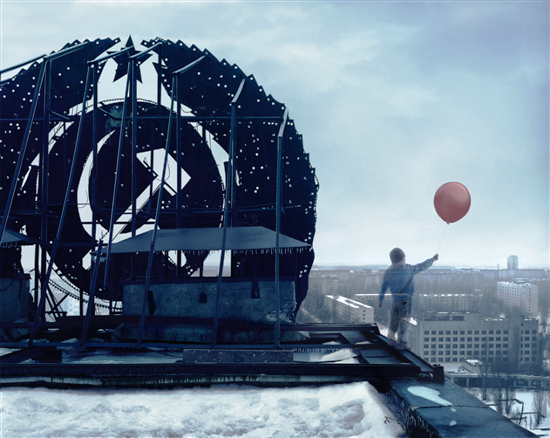
Out in the city, Vojackova climbed up to the roof of the highest building in Chernobyl to photograph the empty city’s silent whiteness. Dominating the frame of this photograph (see right) is the dark silhouette of the cut-out metal hammer and sickle projecting above the roof, once a landmark for people below. The boy then appears in the park where a ferris wheel stands, rusting. It was due to open two weeks after the explosion but now serves as an iconic symbol of remembrance,and is also a presence in the award-winning Irish film, The Door, released last November, and set in many of the same locations. Vojackova was then embarking on her own, very different trip. A short fictional film, it poetically represents the shared experience of the population of Chernobyl through the single tragic story of a family who lost their young daughter to radiation.
In contrast, Vojackova’s installation has personal resonances tied to her memory of the event as a five-year-old living in the Soviet Czechoslovakia. Five small screens mounted on short white wooden columns present the digitally animated version of her journey through Chernobyl, with the boy now drifting like a ghost from screen to screen through each location. Vojackova had built a stage set to match the scale of each scene, and filmed him making the precise movements to match. Colour tones are manipulated to varying degrees of blueness which permeate the collection, from the ethereal paleness of polar snow to duck-egg coloured walls and swimming pool. The boy’s coloration is drained but his red balloon never fades. It is Vojackova’s acknowledgment of the influence on her of Albert Lamorisse’s award-winning 1956 film, The Red Balloon, which, in an incongruous loop, was also the model for the 1980s ad campaign for the new city of Milton Keynes.
The results of this heroic visit is almost shamefully beautiful. but the photographer admits that the sites she photographed are beautiful, "Even though we know the truth."
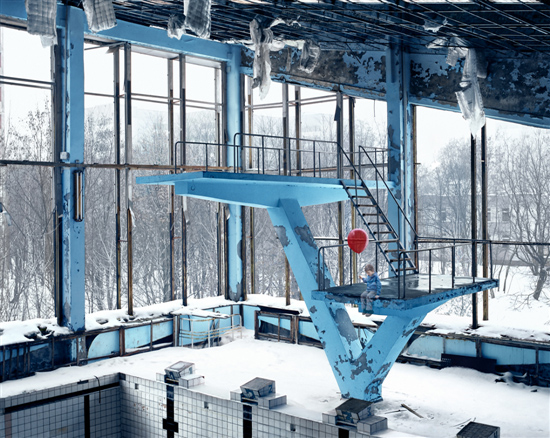
Photo by Hana Vojackova of one of three swimming pools in Chernobyl
- Visit The Red Balloon exhibition at 11 Mansfield Street, London W1, until 27 March.
- View clip from The Door, Oscar-nominated short film set in Chernobyl.
- View the classic 1956 French film The Red Balloon which inspired this exhibition

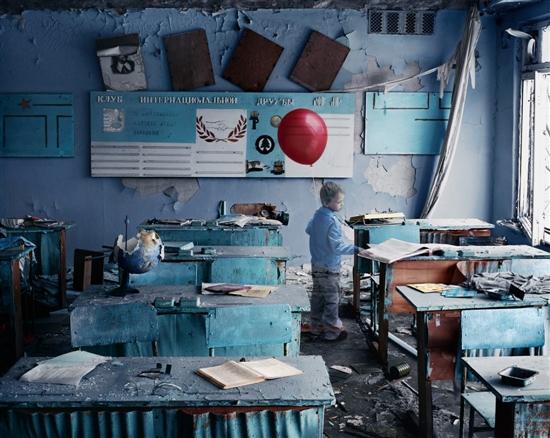

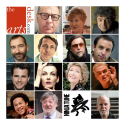
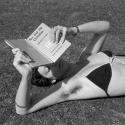
![SEX MONEY RACE RELIGION [2016] by Gilbert and George. Installation shot of Gilbert & George 21ST CENTURY PICTURES Hayward Gallery](/sites/default/files/styles/thumbnail_125_x_125_/public/mastimages/Gilbert%20%26%20George_%2021ST%20CENTURY%20PICTURES.%20SEX%20MONEY%20RACE%20RELIGION%20%5B2016%5D.%20Photo_%20Mark%20Blower.%20Courtesy%20of%20the%20Gilbert%20%26%20George%20and%20the%20Hayward%20Gallery._0.jpg?itok=3oW-Y84i)
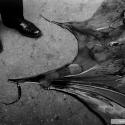
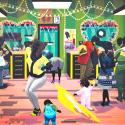
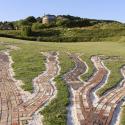
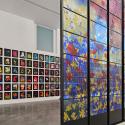
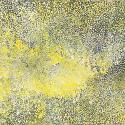

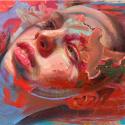
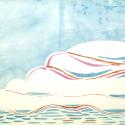

Add comment